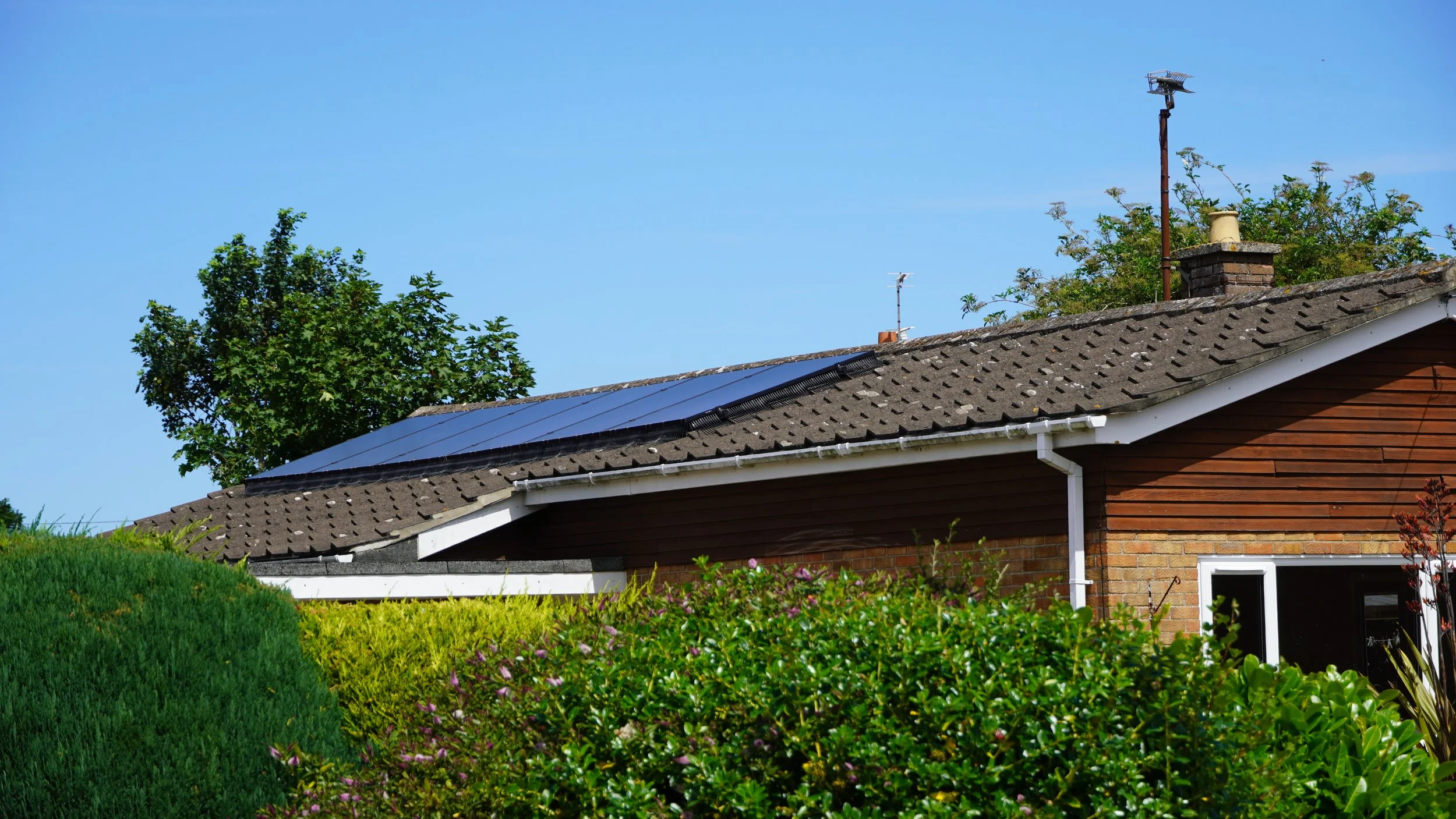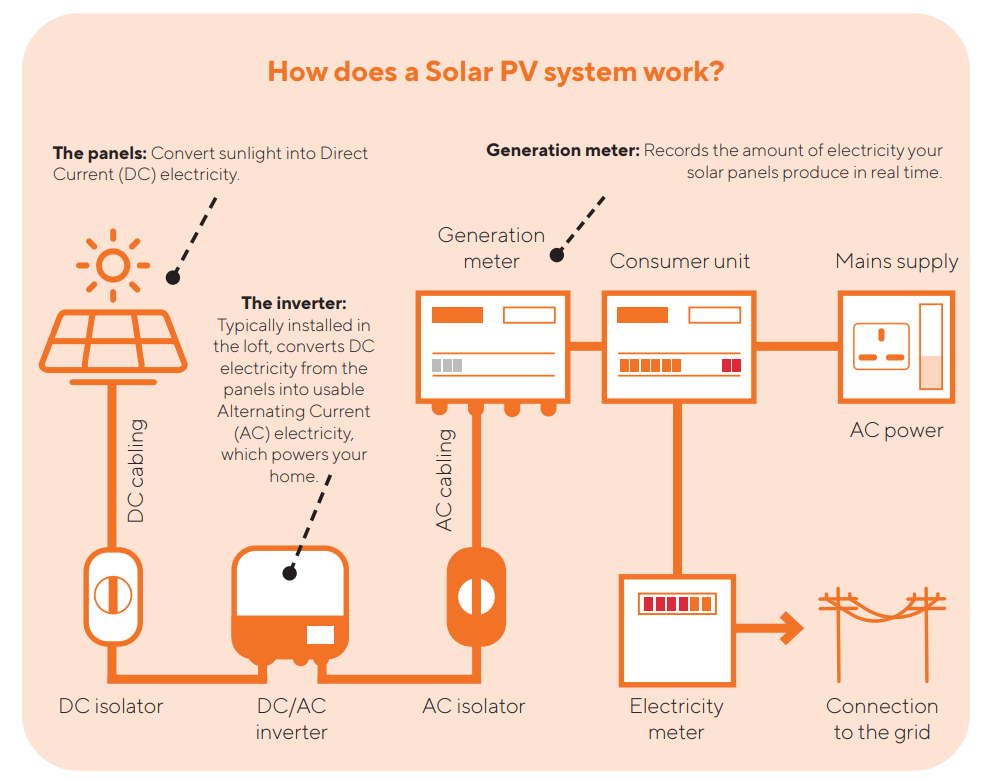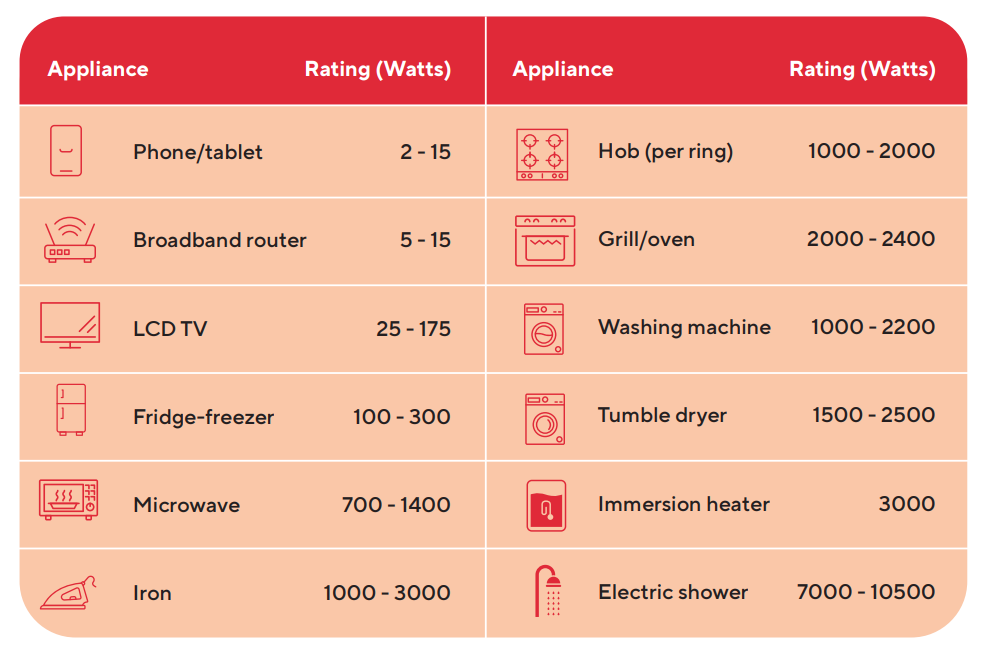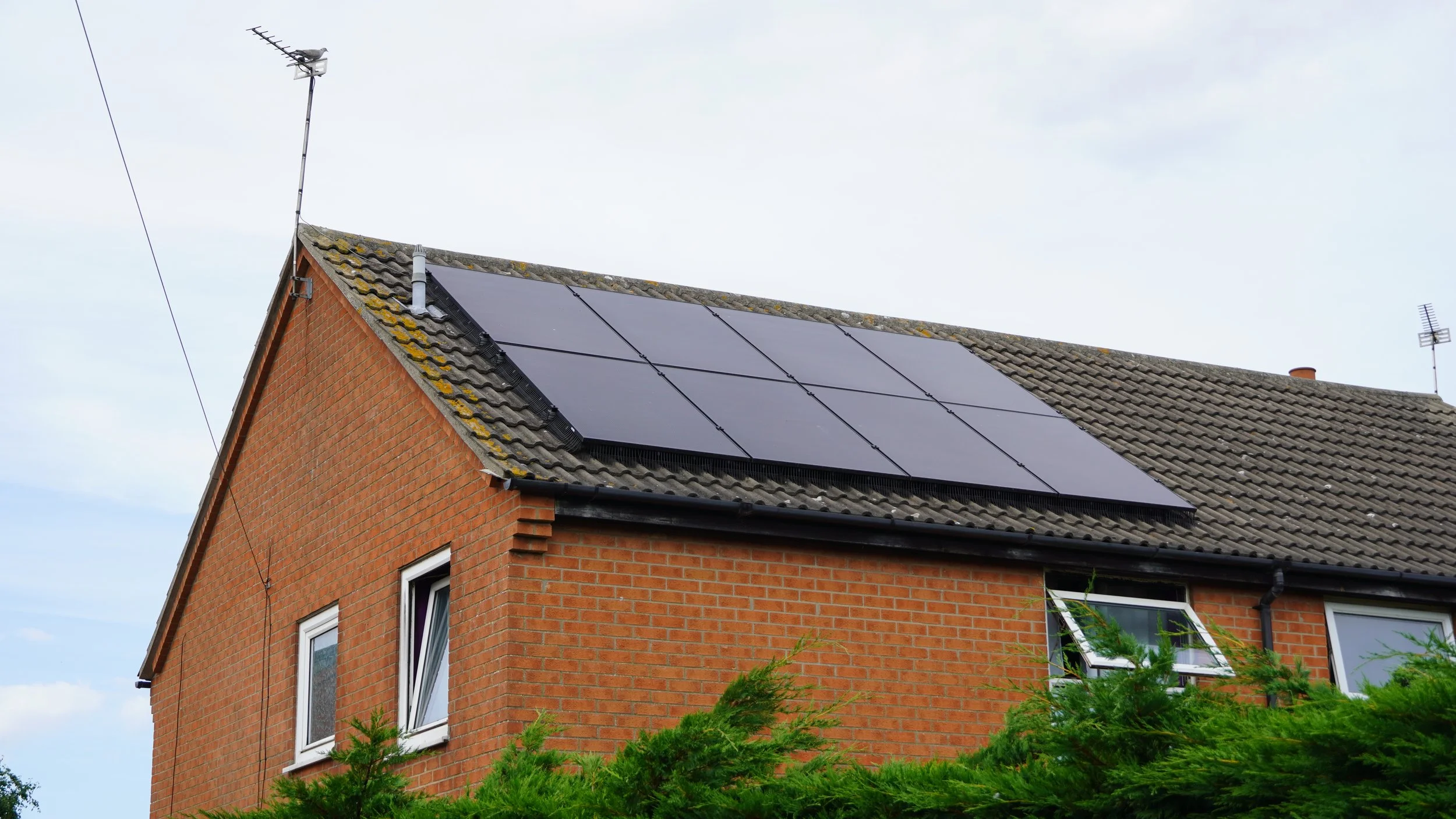Solar panels
What are solar panels?
Solar Photovoltaics (PV) harness the sun’s energy and convert it into electricity that can be used in your home. Solar panels produce free, renewable, low-carbon electricity.
Is my home suitable?
To determine if your home is suitable for Solar PV, an in-person survey will be conducted. Specialised modelling software will be used to analyse data such as your roof’s size, pitch, condition and orientation to determine suitability and the best location for your panels. We’ll also assess potential shading from nearby trees, buildings, or chimneys to determine the suitability of panels.
What is involved?
As standard, a solar PV system will take no longer than one day to install.
• The mounting/railing system will be installed on your roof to securely hold the panels in place.
• The panels will then need to be wired into your electrical system by the installer, before connecting the solar inverter.
• The wiring will primarily take place on the roof and in your loft. However, a cable will also be run to your fuse board. If there is space on your existing fuse board, it will be used, otherwise, a new smaller fuse board will be added. The installers will talk you through the practical requirements of this.
• The inverter is an essential requirement in Solar PV systems and will normally be fitted in your loft or garage. The inverter converts the electricity produced by the solar panels into usable power for your home.
• A separate generation meter will be installed to monitor solar power performance and electricity production.
• Solar PV systems require isolation switches to be installed as standard. These safety switches are installed to allow the system to be shut down safely for future electrical work or roofing repair work completed on your home.
• Bird mesh/netting is fitted around panels to prevent nesting under panels and to protect your panels from bird damage, which could impact the performance of the panels installed.
How do I prepare for an install?
Before installation, ensure the installers have access to your loft, consumer unit (fuse board), and electricity meter. As solar panels are installed on the roof, scaffolding will be required for safe access.
Do I need planning permission?
In most cases, Solar PV systems fall under ‘permitted development,’ meaning they don’t require planning permission. However, if your home is in a conservation area, you will need to consult your local council’s planning team. Additionally, if you have taken a loan against your property, such as equity release (not mortgage), you may need approval from your provider before making improvements.
What maintenance is required?
Solar PV systems run automatically and require minimal maintenance. Rain and snow help clean the panels. Your installation and equipment come with warranties, and copies are provided upon completion of all works.
Do solar panels work in winter?
Yes, solar panels still work in winter if there is daylight. However, like on cloudy days in the summer, the less sunlight there is, the less electricity is generated.
Can I get paid for any extra energy I don’t use?
Yes, after installing your Solar PV system, you can sign up for the Smart Export Guarantee (SEG), a government-backed initiative. The SEG allows you to receive payment for any surplus electricity you export back to the National Grid. Please note that you must apply for an SEG tariff with your chosen electricity supplier – it’s not automatic. You must do this directly as the homeowner.
For more information on SEG, including suppliers and top offers click here. To access a SEG tariff, you’ll generally need to provide proof of MCS registration and your unique MPAN number from the Distribution Network Operator (DNO). The installer will handle the registration of your system with Trustmark and MCS, and will also register your panels with the DNO, ensuring you have all the information needed to access your new tariff. Please note that it can take up to a week for your certificates to be provided after install.
Tips for maximising savings
Please note that individual savings will vary depending on your own personal energy use.
Use appliances during the day: If possible, use an appliance when your solar panels are generating power during the day, instead of in the evening or overnight when grid electricity is needed.
Use high-power appliances in the middle of the day: For greater savings, operate high-power appliances like washing machines and dishwashers during peak solar generation hours, which are usually during the middle of the day.
Use appliances one at a time: If you can, use high-power appliances, such as washing machines and dishwashers one at a time to reduce grid electricity usage.
Lower temperatures and use timers: If possible, run washing machines and dishwashers at lower temperatures. Set timers on appliances to run while you’re out, maximising the use of solar energy during the day.
Install a smart meter: If possible, consider installing a smart meter and use the accompanying in-home display to track and monitor how much electricity you’re purchasing from the grid, helping you manage your energy consumption more efficiently.
Can solar panels power my appliances
In ideal conditions, each panel may generate around 400 to 450W of power. It may be helpful to understand the standard amount of energy your household appliances may use. The electricity used by appliances will vary between makes and models, you can use the general guide below.
What will it cost me?
If you are an owner-occupier and meet the grant criteria, then it will cost you absolutely nothing. The grant will cover the complete cost of the installation and any associated surveys.
Where’s the catch?
There isn’t one. Any enquiry you make will be without obligation, you don’t have to have the work done until you are completely happy with the plan.
This programme is funded through the Department of Energy Security & Net Zero and administered on behalf of Norfolk Councils by Broadland and South Norfolk Councils.
What do I do next?
You can call us on 01603 430103 to discuss this further or complete our enquiry form.
Solar Panel Case Study
Read about David and Valarie’s Norfolk Warm Homes Journey here.
Still want to know more?
The Energy Saving Trust provides general advice and guidance: Solar panels: costs, savings and benefits explained - Energy Saving Trust.



